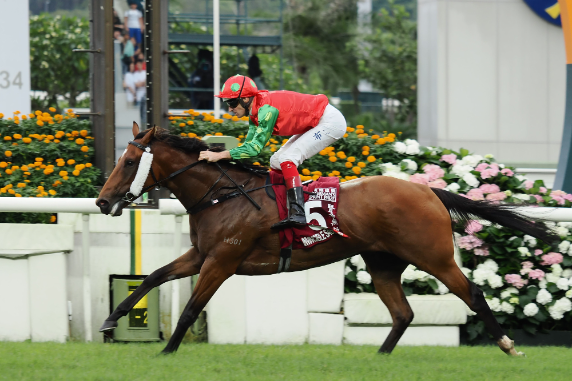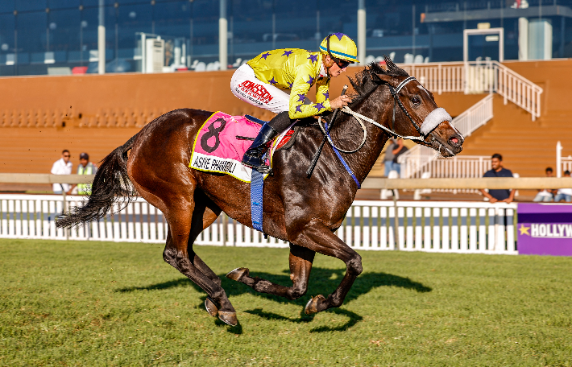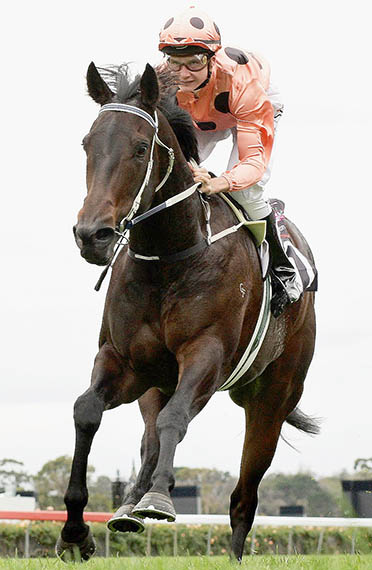
Black Caviar
Whether you were Australian or not, horsey or not, everyone has heard of Black Caviar. My sister married an Aussie last year and her new father-in-law is a racing fan, so naturally we got chatting at the reception. A few minutes into the conversation he says Australia has quite a good sprinting filly at the moment called Black Caviar – have I heard of her? Er, yes, I don’t live under a rock!!
Her story proves yet again that a superstar, a genuine super-star, can still grab attention and emotions across the board. Everyone knows Black Caviar!!
A few vital statistics
Black Caviar was bred by Rickie Jamieson. She is by Bel Esprit and is the first foal out of Helsinge, an unraced daughter of Desert Sun. Black Caviar was born at 5:20am on 18 August 2006 at Gilgai Farm in Nagambie, Victoria. She was raised on the Goulburn River property and in December 2007 went to Swettenham Stud for her 10-week sales prep.
She was sold on the Melbourne Premier Yearling Sale and knocked down to Peter Moody for $210,000. She is owned by Gary and Kerrin Wilkie, Werrett Bloodstock Pty Ltd, Colin Madden, Werrett Madden and his partner Lena, Jannene Madden, Pam Hawkes, David and Jill Taylor. Black Caviar weighs approximately 570 kilograms and stands 16.2 hands high.
The best horse in the world was named by Pam Hawkes, who is fond of caviar, and who noticed that the filly’s maternal grandmother was the racemare Scandinavia, a country famed for its roe. Black Caviar is nicknamed ‘Nelly’.
Ownership
The story of Black Caviar’s purchase is one of those that keep the racing dream alive for the mere mortals among us. It’s not a rags to riches story, nor was she simply a lucky commodity on the balance sheet of a one of the world’s wealthy owners.
Black Caviar is owned by a group of perfectly ordinary suburbanites. Neil Werrett and his partner Lena, Colin and Jannene Madden, Gary and Kerrin Wilkie, David and Jill Taylor and Pam Hawkes have been friends for decades, connected through business and their children.
The decision to buy a horse together was made over drinks during the friends’ annual February holiday at Echuca on the Murray River. “We’d all been involved in horses over the years and we started talking about how it would be good to own one together, to be able to go to the races with a group of friends rather than taking pot luck with a syndicate,” says Gary Wilkie. The group decided to spend up to $125,000.
Neil Werrett had raced horses with trainer Peter Moody and flew to Melbourne to inspect the filly he had picked for them on the 2008 Inglis Melbourne Premier Yearling Sale. She was massively built and was related to Moody’s Group 1 sprinting star of the time, Magnus. Werrett commented to Moody, “She’s got a huge arse,” and Peter said, “That’s what I like about her.” With that, Werrett had to go to $210,000 to get the horse, a price that left his partners a little shell-shocked.
It meant that the Taylors almost missed out. With the purchase price of $210,000, each share was $35,000 and Jill Taylor was none too impressed. The Melbourne couple had never bought a horse before and she was not going to part with that kind of money without a fight.
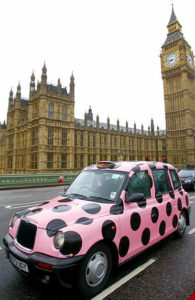
A fabulous Black Caviar Cab
“I’d never really had anything to do with horses. Back then we had twin girls in primary school and owning a racehorse didn’t seem to fit into our busy lifestyle. My husband kept telling me to transfer the money but I kept hanging up on him. I knew he was serious and it’s not like I was angry or anything. I just refused to pay for it.”
Finally David received a frantic call from one of the other owners urging him to pay up for his share of the horse. “Eventually I just walked around to the bank and did it myself. I am a dinosaur who doesn’t do electronic banking.” But Jill has since come round.
“Money cannot buy the experience that we have had, it is a fairy tale, a dream. There are other horses that have done some brilliant things, but people just love this horse and not just for her unbeaten record. That huge stride which is 1.3 times the average, and that heart that she showed over at Ascot when she was injured and ran through the pain. That’s why the nation is behind her.”
Her Career
When Black Caviar won her first barrier trial by five lengths, Wilkie had a couple of questions for Moody. “Can she run?” “Yes”, said the trainer. “How fast?” Wilkie wanted to know. “I don’t know”, came the reply.
It was the start of a legend. Black Caviar won her first race on April 18, 2009 at Flemington with Jarrad Noske in the saddle. She posted her first black-type win at her second start, the Blue Sapphire Stakes at Caulfield. And the wins have just kept coming.
Les Carlyon comments, “Black Caviar is different to most champions because she wins her races in the middle. By that I mean whereas most horses win their races by running fast at the end of a race, over the final 200m, she runs so incredibly fast from the 600m to the 200m that every horse behind her is off the bit and every jockey is panicking. There’s still 200m to run but the race is over. Nothing can get near her because she’s piled on this unbearable pressure in the middle of the race and broken their hearts.”
But she’s won in all sorts of ways. In the 9 April 2011 Group 1 T.J. Smith Stakes at Randwick, 600kg gelding Hay List put three lengths on Black Caviar entering the straight. For a few heart-stopping seconds it looked like the mare might be in trouble, but then she found her stride, stretched her neck and stormed past her rival like he was nailed to the fence.
To prove the quality of her win, at his next start, Hay List demoralised a Group 1 field. As usual, where there are fans, there are detractors and the chorus singing “well what has she really beaten?” often made their voices heard.
So when the team decided to aim her for the Group 1 Diamond Jubilee Stakes at Royal Ascot last June, nerves were running high. Apart from the 11,000 mile journey, the 30 hour flight and that famous compression suit, horses foaled to Southern Hemisphere time officially have their birthdays on on 1 August, whereas their Northern Hemisphere counterparts have their ages advanced by one year on 1 January.
This meant that Black Caviar was officially considered a six-year-old for her Ascot start, when she was still a five-year-old by Southern Hemisphere standards. It was possibly her most demanding outing and the mare only just won by a head from the French-trained filly Moonlight Cloud, with Restiadargent a neck away in third, with even the usually restrained UK racing commentator yelling “Oooooh, he nearly blew it”.
Perhaps more remarkably, it was subsequently discovered that Black Caviar had sustained an eight-centimetre muscle tear during the race. If anything, that run sealed her greatness and her place in the hearts of racing fans everywhere. She had proved that when the going got tough, the tough got going and that she truly possessed the galloping heart of a champion. Everyone, horsey or not, wanted a piece of her.
The Caviar Cavalcade
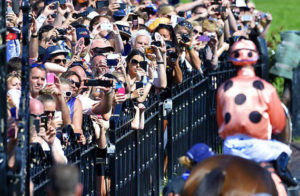
Crowds gather to see the famous filly
Ahead of her Diamond Jubilee Stakes run, London cabbie Paul Gardiner painted his car in Black Caviar’s colours. She was Australian Horse of the Year for the 2010/2011 season as well as the 2011/2012 season. She was ranked the best sprinter in the world for three years in a row from 2010 – 2012. In November 2012 she made history by being the first non-human to win the Victorian Racing Media Association Personality of the Year Award, ahead of four other nominees including her trainer and jockey!
She was also named European Champion Sprinter at the Cartier Racing Awards, becoming the first horse trained outside Europe to hold this honour. In December 2012, she became the first horse to grace the cover of Australian Vogue. News of the impending issue caused such a stir that they had to go to print early.
This year, she became the first horse to be inducted into the Australian Racing Hall of Fame while still racing. She made front page news across the globe and she won hearts wherever she went.
Her consistency was unprecedented. Where even Phar Lap and Makybe Diva had bad days, Black Caviar never did. Not on your Nelly! But possibly the most amazing thing about Black Caviar is that she raced for just 26 mins and 42 seconds in her whole career.
Last Start
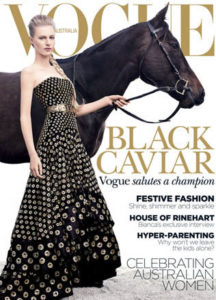
Black Caviar’s appearance on the cover of Vogue magazine
I loved the build-up to the 13 April Group 1 Darley TJ Smith Stakes at Royal Randwick. There was a wonderful interview by Tim Bailey during which he said “The pride of Australia is the greatest show on earth” and he invited everyone to Royal Randwick, “The theatre of the horse, the theatre of history.”
Predictably, the racecourse was sold out. Racing enthusiasts and the ordinary man in the street turned up in their droves to see history in the making. All over the country people queued up to bet on the “black flash”, putting $1 on her not to collect the $1.20 or so pay-out, but to keep the winning ticket as a souvenir. Which is probably the most sensible way of doing it as the official merchandise started at $80 for a peak cap!
Despite the assertions that her rivals would be doing everything they could to hinder her, trainer Peter Moody was unperturbed. “Plenty of them have ridden against her before, and they’re probably still using Vaseline to cover up the windburn!”
And of course, as she had done 24 times before, Black Caviar came up trumps. On 13 April 2013, in front of a packed grandstand, in fact, a packed racecourse, Black Caviar galloped her way into history, clocking up her 25th win in a row and her 15th Grade 1. As Luke Nolan succinctly put it after the race “If there are any knockers after that, come and see me and I’ll sort you out!”
A few days later, on 17 April 2013, the Black Caviar connections announced her retirement. While it is sad to see her go, it also feels right. But how lucky we are that she happened in our time and how incredibly lucky for all of us that we got to see her shine.
With the National Sales and Champions Day just around the corner, we are once again reminded that horses can be a 4-legged lottery. There will be big ones and small ones, big prices and no doubt the odd bargain to be had. The race day will remind us that fate and luck are capricious things. But at the end of the day, it is the simple things in life that make it worthwhile. The sun on your back, a song in your heart and the promise of a good horse.







